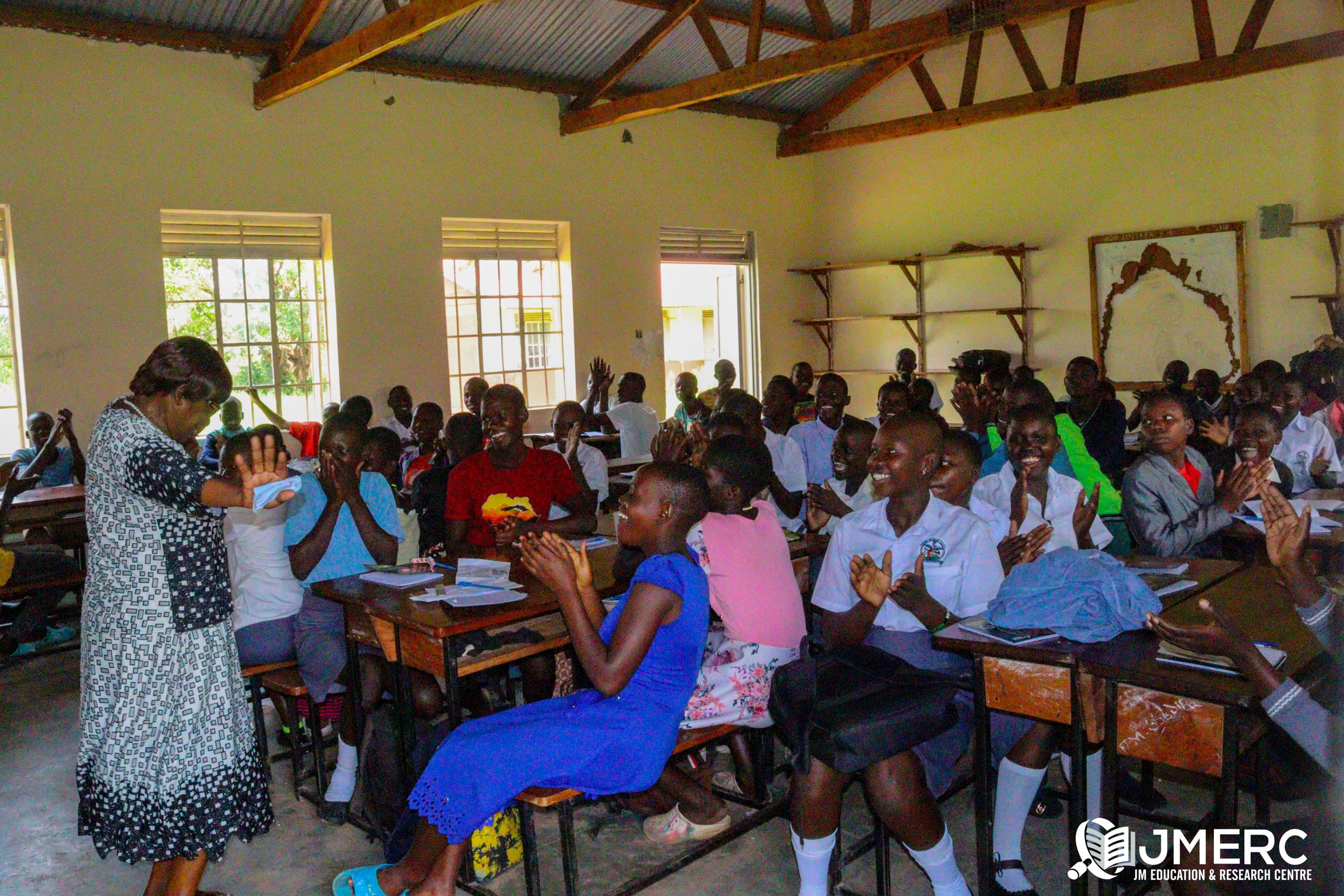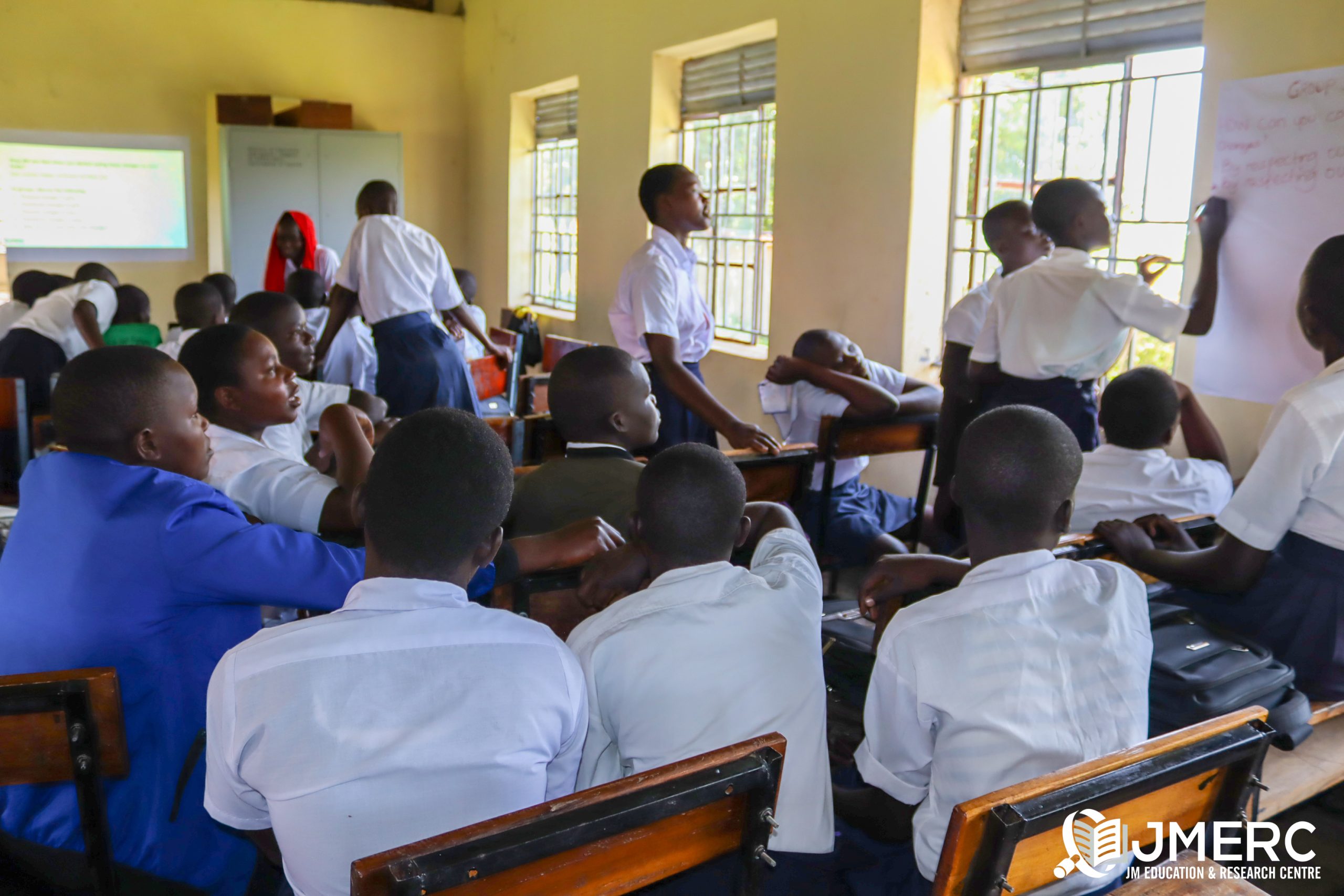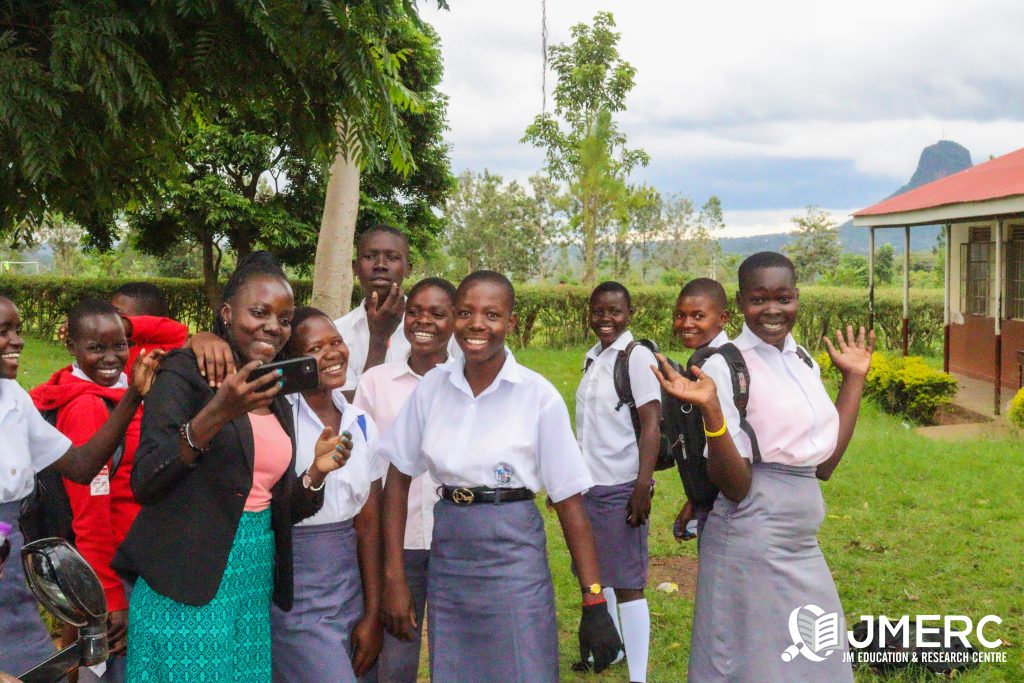menu

True gender equality in education means not just equal numbers, but empowered students who can thrive and lead.
Uganda and many countries have made impressive gains in closing the gender gap in school enrollment. In a joint document, Plan International, Transform Education, UNGEI and UNICEF agree that over the past few decades, gender parity in education has skyrocketed globally. In Uganda, for example, a recent study shows that gender parity in primary education has largely been achieved – girls now even slightly outnumber boys in primary completion rates (54% vs 52% in 2017) (UNESCO-IICBA). However, parity is only a surface measure. True gender equality in education goes beyond headcounts. It requires that girls and boys are equally empowered, that they have agency and voice in their learning, and that schools become spaces of transformative change rather than places where old inequalities are merely reproduced. In short, achieving equal enrollment is necessary but not sufficient for gender justice in education. This blog explores how moving “beyond parity” – towards empowerment, agency, participation, and gender-transformative teaching practices – is playing out in Uganda’s education system.
Increasing girls’ access to education has been a critical first step, but access alone does not guarantee equity in experience or outcomes. As a UNICEF, and its partners observes, girls around the world still face exclusion and discrimination “simply because they are girls,” even in school, while boys are also constrained by harmful masculine norms. In other words, even with equal numbers in classrooms, deeply entrenched gender norms can continue to limit students’ horizons. That’s why global education leaders are calling for a gender-transformative approach in education. This approach “moves beyond simply improving access” and “equips and empowers stakeholders – students, teachers, communities, and policymakers – to examine, challenge, and change harmful gender norms and power imbalances” (See UNICEF’s Gender Transformative Education Training). In a gender-transformative education system, schools actively foster equality in and through education: from curricula that challenge stereotypes, to teaching practices that give girls and boys equal encouragement, to school cultures that promote respect and inclusion.
International frameworks emphasize this comprehensive vision. UNESCO’s strategy for gender equality in education calls for attention not just to parity in enrollment, but to content, pedagogy, and learning environments – aiming for a “system-wide transformation” that yields equal outcomes and empowers all learners. In practice, this means teaching and mentoring approaches that build girls’ confidence and leadership, engage boys as allies in gender equality, and ensure every child feels safe and supported to pursue their potential. Education must not only impart academic skills, but also expand students’ agency – their capacity to make choices, voice their opinions, and take charge of their futures. As one academic analysis puts it, eliminating gender oppression requires “a comprehensive and revolutionary approach” that tackles underlying power disparities through education. In short, achieving genuine gender equality entails empowerment – enabling learners of all genders to become drivers of change in their own lives and communities.
Despite near-parity in enrollment, disparities persist in completion rates and learning outcomes.
Uganda illustrates both the progress and the persistent gaps in the journey toward gender equality in education. On the one hand, Uganda has increased girls’ access to schooling dramatically. It reached gender parity in primary school enrollment by the mid-2010s (See a Recent Study), and today girls even have a slightly higher primary completion rate than boys (See UNESCO – IICBA). On the other hand, major inequalities remain beyond the primary level. UNESCO-IICBA underscores that far fewer girls than boys persist through secondary education – only about 25% of young women complete lower secondary school, compared to 28% of young men. At the tertiary level, female enrollment also lags behind (UNESCO – IICBA). These numbers reflect the compounding barriers that many Ugandan girls face through adolescence, even after gaining initial access to school.

Why do girls continue to drop out or underachieve, despite parity in early grades? The challenges are complex and rooted in social, economic, and cultural factors. As documented by education initiatives in Uganda, girls often encounter systemic obstacles that boys do not. These include early marriage and teenage pregnancy, gender-based violence, limited sanitary facilities, and deep-seated cultural norms that prioritize girls’ domestic roles over their education. For instance, Uganda’s latest Demographic and Health Survey found that 24% of girls aged 15–19 have begun childbearing, often ending their schooling prematurely. When a girl becomes pregnant, the odds are she will not return to the classroom – the National Strategy to end Child Marriage and Teenage Pregnancies 2022/23-2026/27 shows that 70% of teenage mothers never resume their education. This is despite official policies allowing young mothers to re-enroll. In practice, many schools ignore or poorly enforce re-entry guidelines, and stigma against pregnant girls remains high. Economic hardship is another major barrier: nearly half of families cite financial constraints as the main reason they don’t send teen mothers back to school (see details).
The result of these barriers is a profound loss of human potential. As one Ugandan expert noted, girls’ truncated education not only limits their own opportunities to thrive and lead, but also harms their communities by perpetuating cycles of poverty. Clearly, achieving true gender equality in education will require tackling these entrenched obstacles. This means going beyond getting girls into school, and ensuring they can succeed, complete, and benefit equally from education. It calls for bold strategies to transform the education system – from supportive policies (like enforcing re-entry for young mothers) to community engagement that shifts harmful social norms. It also calls for changes within the classroom: teachers trained to recognize and reduce gender bias, curricula that affirm girls’ and boys’ capabilities equally, and school environments that protect girls’ safety and dignity (for example, adequate menstrual hygiene facilities and strong anti-GBV measures). The GPE’s Knowledge Exchange Programme explains that Uganda’s Ministry of Education and Sports has taken some steps in this direction – recently developing guidelines on gender-responsive pedagogy and training teacher mentors to promote bias-free, girl-friendly classrooms. Such measures recognize that quality of education – how empowering and inclusive it is – matters just as much as quantity of enrollment.
To truly “build back better” for gender equality, JMERC and its collaborators are now pioneering a comprehensive approach known as the Gender Transformative Education Initiative (GTEI). Launched in mid 2024 and in collaboration with the College of Education and External Studies at Makerere University, STiR Education Uganda, and with the unwavering support and guidance of the Ministry of Education and Sports, GTEI embodies the multi-faceted, gender-transformative approach advocated by UNESCO, UNICEF, and others. Rather than a standalone project, it is envisioned as a movement – working across schools, communities, and policy arenas to make gender equality a lived reality in education.
What does GTEI do? In essence, it aims to shift mindsets and practices throughout the education system. The program recognizes that empowering girls (and engaging boys as partners in equality) requires intervention on multiple levels. Among its core strategies, GTEI focuses on: educating both girls and boys about gender equality, respect, and inclusion; training teachers in gender-responsive pedagogy to encourage equal participation and reduce bias; engaging parents, community leaders, and even the media to raise awareness and break down gender stereotypes; and advocating for education policies that prioritize gender equality, such as safe re-entry to school for young mothers. By working simultaneously in the classroom, the community, and the policy sphere, the initiative seeks to uproot the biases and barriers that hold girls back. Through targeted interventions, GTEI challenges restrictive gender norms and empowers girls to realize their full potential – ensuring they have not only the opportunity to attend school, but the support to excel academically and to grow into confident leaders. Importantly, boys are actively involved in this process as well, learning positive masculinity and respect, so that both genders benefit from a more equal and respectful learning environment.
The scale of ambition of GTEI is notable. The initiative’s goal is to reach 1,000 schools across Uganda, impacting over 2 million girls and boys by 2027. This includes training thousands of teachers (5,000 teachers and 1,000 school leaders) in gender-responsive methods, and engaging at least one million parents and community members through campaigns and partnerships (including media outreach via NTV Uganda). Such breadth is designed to spark a nationwide movement, creating ripple effects beyond individual pilot schools. By 2027, GTEI envisions a generation of young Ugandans who are committed to gender equality and equipped with the skills and mindsets to challenge stereotypes. This aligns with the broader vision of gender-transformative education – not just integrating girls into the status quo, but transforming the status quo itself. In GTEI schools, one would expect to see girls and boys equally engaged in class discussions and leadership roles, teachers discouraging gender stereotypes and encouraging all students to aim high, and communities rallying around girls’ education as a shared priority.
Research and learning are key components of the GTEI. In fact, a preliminary study has recently been completed to inform the initiative’s next steps. This study was guided by the question: “How can Uganda’s formal education system be transformed to foster gender equality and student agency for both girls and boys, and what strategies – in policy and practice – are needed to address the barriers (including re-engagement after challenges like teenage pregnancy) through gender-transformative and empowering initiatives?” Answering this question involved examining the very hurdles discussed above – from re-entry after pregnancy to gender biases in pedagogy – and identifying what practical changes are needed. The study’s findings will shed light on effective strategies for empowering students and institutionalizing gender equality in schools. These findings are expected to be shared publicly soon, and will be invaluable for policymakers, educators, and advocates not only in Uganda but across the region.

Uganda’s bold experiment with gender-transformative education comes at a crucial time. As the country emerges from challenges like the COVID-19 school closures (which saw a spike in teen pregnancies and dropouts), there is an urgent imperative to re-engage learners and not lose a generation of girls. The GTEI and similar efforts underscore that getting to true equality means tackling both visible gaps (like enrollment and completion rates) and invisible barriers (like biases, norms, and lack of voice). It means creating an education system where every girl and boy feels valued, safe, and empowered to participate. When students have agency – for example, when a girl who returned to school after having a baby is given leadership opportunities and support instead of stigma – education becomes truly transformative. The payoff is enormous: research shows (World Bank, UNICEF, United Nations), that educating and empowering girls leads to healthier families, stronger economies, and more peaceful communities, and it also frees boys from rigid norms, allowing them to explore diverse roles and emotions.
In the coming weeks, the GTEI partners will be releasing the results of their preliminary study, which will provide deeper insight into what policies and practices can accelerate this transformation in Uganda’s schools. We encourage you to stay tuned to our organization’s website and social media channels for those results and upcoming events. Together, we can champion gender transformative education in Uganda.
In conclusion, achieving gender parity in enrollment was a critical milestone for Uganda, but the journey does not stop at parity. The next horizon is empowerment and agency: ensuring that girls and boys not only sit in the same classrooms, but have equal chances to speak up, pursue their ambitions, and shape their futures. Uganda’s Gender Transformative Education Initiative is lighting the way toward that horizon, demonstrating that with concerted effort, education can indeed be a powerful engine of gender equality. As GTEI’s motto suggests, this is about empowering the next generation of leaders and champions of gender equality. By investing in gender-transformative education today, Uganda is planting the seeds of a more equitable tomorrow – a future where all children, regardless of gender, have the opportunity to succeed.